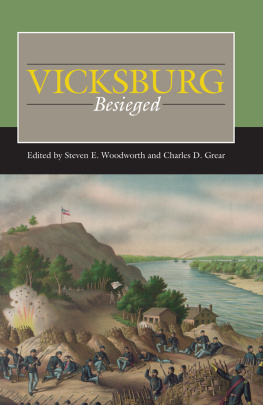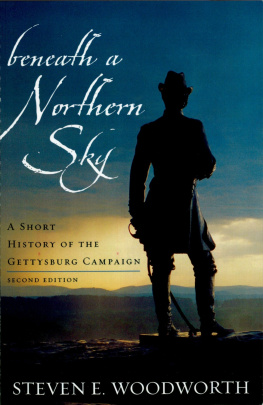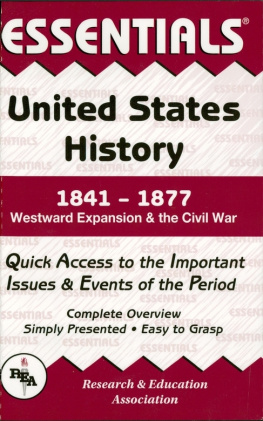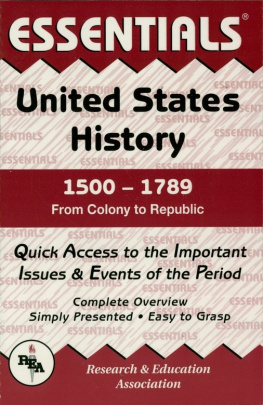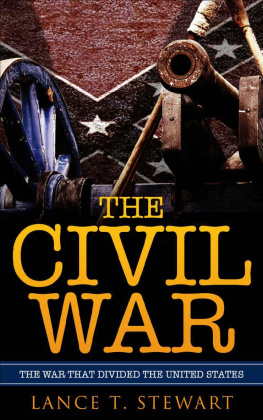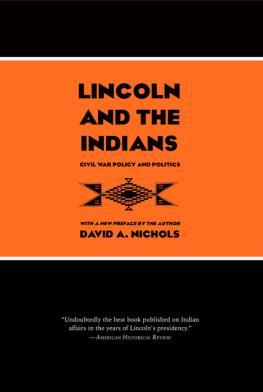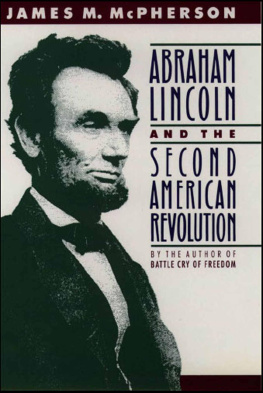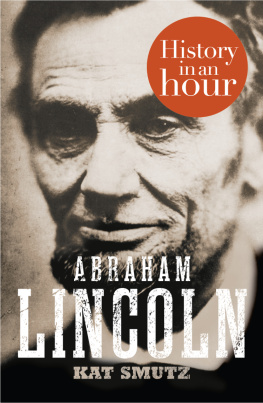ABOUT THE AUTHOR
Steven E. Woodworth is professor of history at Texas Christian University and author, coauthor, or editor of twenty-seven books. He is a two-time winner of the Fletcher Pratt Award of the New York Civil War Round Table, a two-time finalist for the Peter Seaborg Award of the George Tyler Moore Center for the Study of the Civil War, and a winner of the Grady McWhiney Award of the Dallas Civil War Round Table for lifetime contribution to the study of Civil War history. He is the author, most recently, of Manifest Destinies: Americas Westward Expansion and the Road to the Civil War (2010).
ACKNOWLEDGMENTS
It is a pleasure to acknowledge with gratitude the kind assistance of several who have aided in the preparation of this book. Justin Solonick read and critiqued the chapters and offered many excellent suggestions for revisions. Similarly, Niels Aaboe of Rowman & Littlefield offered good ideas for the development of the work. Both have contributed to the significant improvement of the final product. Niels and the rest of the staff at Rowman & Littlefield were very supportive and patient throughout the process of writing and publishing the book. Charles D. Grear was a very helpful and competent mapmaker. His knowledge of the Civil War made the process of deciding what should go into the maps infinitely easier than would otherwise have been the case. Finally, my wife, Leah, proofread the manuscript for me and provided valuable moral support. To all I extend my sincere thanks.
1
AMERICAS LONG ROAD TO CIVIL WAR
SLAVERY IN AMERICA DURING THE COLONIAL ERA AND THE AMERICAN REVOLUTION
Long before the April night when a Confederate artillerist in Charleston, South Carolina, jerked the lanyard of a heavy cannon and fired the opening shot of the Civil War, the seeds of the dispute that would send millions of Americans into battle against each other in what still stands as the republics deadliest war had already taken deep root in American culture. That dispute was about slavery. Slaverys beginnings in America lay far back in colonial times long before the four score and some odd years the United States had been in existence on that April night in 1861 when the shooting finally started in earnest.
When the first Englishmen had come to the New World almost three centuries before, they had prided themselves that their laws, unlike those of already established colonial power Spain, knew no such thing as a slave. Over the next century, however, that was to change. Englishmen in their countrys first permanent settlement in what was to become the United States, Jamestown, found their economic fortune in the cultivation of the tobacco plant. Tobacco was a labor-intensive crop. With land abundant in colonial Virginia, the only practical limit on how much a man could grow and, therefore, how much money he could earn, was how much labor he could command. Hired labor was out of the question. Any potential hired man could readily obtain his own land and enjoy all the fruits of his own labor rather than only part of them as an employee. So the only way a large landowner could work his acres was with nonfree labor.
At first the solution Englishmen chose was that of indentured servitude. An indentured servant was a poor Englishman who could not afford passage to America but still wanted to take his shot at making his fortune in the New World. In order to do so, he would sign a contract, called an indenture, binding him to service for a certain specified period of years, usually seven, in exchange for the cost of his transportation to the colony. Indentured servants were the most common form of nonfree labor in Virginia during the colonys first half century. They could be male or, relatively rarely, female; could be bought and sold; and were sometimes mistreated, and their terms of service could be legally extended for various infractions, such as, in the case of a female servant, giving birth to a child. However, the child in that case was free, not the property of the master, who, under English law, owned the indentured servants labor but not his or her person. As long as mortality remained extremely high in early colonial Virginia, reliance on indentured servants, rather than actual slaves, was not only familiar but also economically sensible since both the indentured servant and the more expensive lifetime slave were statistically likely to be dead before seven years were up.
The shift from indentured servitude to race-based slavery was gradual. Life spans slowly increased, making lifetime slaves a better investment. The Spanish in the Caribbean, Central America, and South America were already using slavery on a vast scale and had been doing so for over a century. A well-developed transatlantic slave trade, carried in Spanish, Portuguese, Dutch, and English ships, served the constant demand of Latin American colonial economies for ever more bondsmen. It was easy enough for Englishmen in the North American colonies of Virginia and its junior partner on the Chesapeake Bay, Maryland, to begin importing slaves when the stream of indentured servants failed to meet demand or when a longer-term investment seemed appealing. It remains unclear what, if any, additional factors drove the shift toward slavery, and historians have long argued as to whether racism caused slavery or was caused by it. In any case, by the 1660s, the economies of both Virginia and Maryland had shifted overwhelmingly to the use of slaves rather than indentured servants, though a few of the latter continued to be present in the colonies for several decades more. By that time, the law codes of these two colonies fully recognized and protected the institution of slavery.
During that same decade, other Englishmen established the Carolinas as colonies just south of Virginia. South Carolina in particular quickly adopted a slave culture and economy, not, like those of its neighbors to the north, by developing it internally but rather by importing a complete and operating slave economy and culture from the British-owned sugarcane plantation island of Barbados, where indentured servitude had given way to slavery even more quickly than it had in the Chesapeake colonies amid the brutal, killing labor and conditions of sugar cultivation. Barbados planters seeking to expand or younger sons of such planters seeking establishments of their own migrated to the new colony of South Carolina and brought their slaves and the associated culture and laws with them. Though South Carolina planters came to grow rice and indigo rather than tobacco or sugar, their economy, like that of the Chesapeake colonies and Barbados, rested on the foundation of staple-crop agriculture, well suited for cultivation by large gangs of fairly unskilled and unmotivated workers. By about 1715 South Carolina had become the only one of the colonies in which slaves made up a majority of the population. North Carolina, though with a somewhat more diverse economy, followed the cultures of its neighbors to the north and south. Georgias founders, James Oglethorpe and his philanthropic fellow proprietors, never intended their experiment in enlightened reform to include slavery, but the colonists eventually managed to introduce the institution there as well.
While slavery thrived and became the mainstay of the economies of the southern colonies, the northern colonies developed along different lines. Slavery existed there as well but in far smaller numbers. Some of the colonies, such as Massachusetts and Pennsylvania, had originally been born out of religious motivations that were more or less hostile to slavery and at least initially hindered its growth. All the northern colonies developed economies that lent themselves less well to the use of slave labor than did the southern colonies virtually uniform dependence on staple-crop agriculture. Mixed small manufacturing, small farming, shipping, and fishing in New England; grain cultivation in Pennsylvania; and commerce in port cities such as Philadelphia, New York, and Boston all presented less temptation for the wholesale exploitation of slaves. Thus, conscience and economics combined to limit the total number of bondsmen in the northern colonies to a tiny fraction of those in the South.


